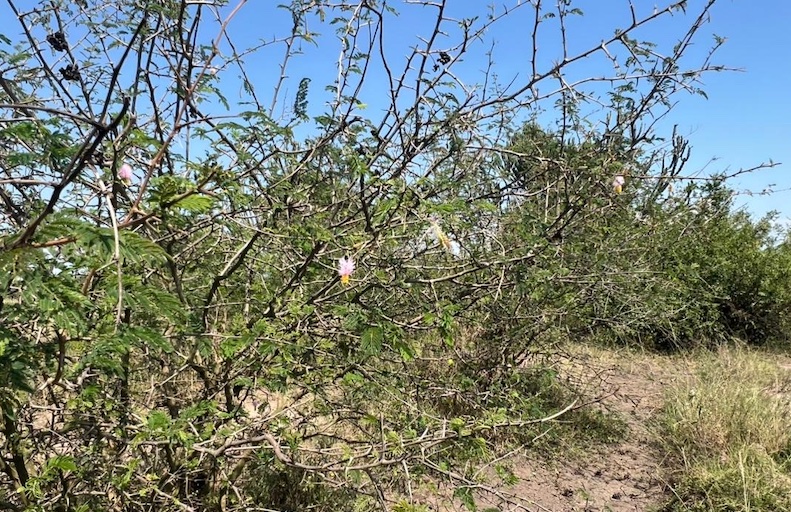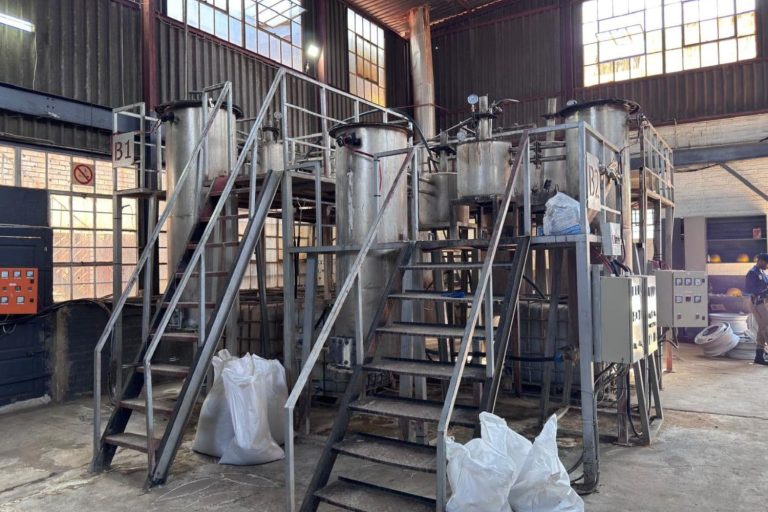
Founded in 1952 as Kazinga national park and later renamed Queen Elizabeth national park, the crown jewel of Uganda’s wilderness reigns supreme as one of Africa’s top wildlife sanctuaries.
Nestled at the northern foothills of the Rwenzori Mountains, home to equatorial snow-capped peaks, lush montane forests, and misty moorlands, the park is a living kingdom of nature and a paradise where adventure and serenity share the same horizon.
The park boasts 72 majestic craters, the sparkling waters of Lakes George and Edward, and the Kazinga Channel, where a symphony of over 600 bird species greets herds of hippos, buffaloes, and elephants as they gather to quench their thirst and cool off beneath the African sun.
Threat of invasive species
Despite its dazzling beauty and its role as home to over 20,000 antelopes, tree-climbing lions, and savanna (Cape) buffaloes, a recent visit revealed that the park faces serious conservation challenges due to the spread of the invasive species Dicrostachys cinerea, commonly known as sicklebush.
First identified in 2014, sicklebush has become a serious ecological threat, disrupting migratory pathways, rangelands, and kob leks, the vital mating and grazing grounds for antelopes and other wildlife.
Approximately 7,961 hectares of the park, about 40 per cent of its former open savanna grasslands of the park have been lost to these invasive plants, highlighting the gravity of the problem.
Philemon Tumwebaze, ecological monitoring and research officer at Queen Elizabeth national park, said the species is not native to the ecosystem and has had devastating impacts on both conservation efforts and tourism.
“It spreads rapidly, forming impenetrable thickets that choke out native vegetation, which wildlife relies on for food,” he explained.
He noted that sicklebush renders large areas uninhabitable, forcing animals to migrate. Herbivores move in search of edible grass, and predators follow them. This not only disrupts the food chain but also reduces wildlife sightings, directly affecting the park’s tourism appeal.
“The invasive species is fueling human-wildlife conflict, forcing animals to move out of the park into nearby areas where they destroy people’s crops. As a result, many animals have been killed, while others have been injured by community members,” he said.
“We have a big problem. We have lost vast feeding grounds to invasive species, and when animals don’t feed, they often fail to conceive and give birth. This affects their reproduction rates, and in the long run, we risk losing entire habitats if we don’t secure enough funding to fight Dicrostachys cinerea,” he added.
In the absence of sufficient food, female animals focus on caring for their young ones rather than conceiving again, further affecting the park’s wildlife population.
Efforts to curb sicklebush
Since the identification of the invasive species, Uganda Wildlife Authority (UWA) petitioned the ministry of Tourism, Wildlife and Antiquities as well as development partners, including the World Wildlife Fund (WWF), and secured funding to remove the invasive plants.
In 2014, the park management opted for mechanical removal, using bulldozers to clear the bushes. However, they underestimated the plant’s rapid multiplication rate. Every part of the sicklebush, except the leaves, can sprout into a new plant, making complete eradication extremely difficult.
The management then, in 2018, attempted biological control by importing moths to infest the sicklebush. Unfortunately, this approach also failed. They finally settled on manual removal, slashing, uprooting, and burning the invasive species, a method that has proven effective.
With available resources, the park has cleared 765 hectares of infested areas using manual removal, which involves uprooting roots, burning plants, and clearing regrowth every six months.
The park also employs local communities to assist in the removal of sicklebush. One hectare can be cleared by 25 people in four days, costing about Shs 4 million, while regrowth clearance costs Shs 2 million.
The park is appealing for over Shs 43.1 billion to combat sicklebush before it destroys the remaining habitats within the protected area.
Other conservation challenges
Despite the threat from invasive species, population pressure from the 11 fishing communities surrounding the park is also affecting conservation efforts, according to Eric Moris Enyel, chief warden at Queen Elizabeth national park.
These communities demand land for cultivation, settlement, and roads, which has led to the killing of wildlife in the protected area.
“Insecurities also affect conservation in the park since we are near the border. However, the Uganda People’s Defence Forces (UPDF) is working hand in hand with UWA to contain possible security threats within the area in and around the park,” said Enyel.
The chief warden explained that since Queen Elizabeth national park is a biosphere, the population of people living within the protected area has been steadily increasing. He noted that, in the near future, constitutional provisions may enable these communities to demand the elevation of their settlements to town councils and, eventually, municipalities, thereby intensifying pressure on the park’s land and resources.
Conservation mechanisms
In response to human–wildlife conflict, Enyel said the park has embarked on fencing the protected area using electric fences. At least 126 km of solar-powered electric fence has been installed, with 351 km still to be completed.
To protect communities in areas without fences, the park has installed 1,897 beehives along the borders.
“Elephants fear bees and avoid areas with beehives because the buzzing sound irritates them. They also believe the bees could enter their trunks, which could be fatal,” Enyel explained.
The park has also dug trenches in unfenced areas to stop elephants from entering communities and encourages locals to grow palatable crops that naturally deter wildlife. Recently, the park reported 400 cases of human–elephant conflict, but the measures have reduced incidents to fewer than 30 in the area.
Smart animal monitoring
Julius Obwona, officer in charge of law enforcement, operations, and security at Queen Elizabeth national park, said the park employs smart monitoring technology to enhance real-time data collection and ranger patrols.
“The Earth Ranger application is installed on the phones of rangers on duty to collect data for management purposes and prosecution of poachers. With this device, rangers can take GPS coordinates of where a suspect was arrested, aiding successful prosecution,” Obwona explained.
He said the park has also collared dominant male lions, which are closely monitored to prevent them from endangering cubs born to various female lions. This initiative was introduced following a high cub mortality rate within the protected area.
The collaring of animals, including elephants, leopards, and others, also allows the park to monitor grazing ranges and facilitates tourist tracking activities, enabling visitors who pay tracking fees to locate specific animals safely.
These measures aim to protect both wildlife and local communities, ensuring coexistence while safeguarding the park’s biodiversity.
Empowering communities
UWA is working with the Kataara Women’s Group in Rubirizi district to promote poverty alleviation and environmental conservation in communities neighbouring the park.
Initially, the community relied heavily on poaching for bushmeat and collecting firewood from the park for cooking. However, the narrative has since changed, according to Agaba Moses, a representative of the Kataara Women’s Group project.
“The community knew no other sauce except bushmeat. Both men and women would set deadly traps to catch wild animals, which greatly affected the conservation efforts. Sometimes, poachers were killed by the animals, while some elephants were left maimed, losing parts of their trunks,” he explained.
With support from UWA, the group says community attitudes have shifted. They are now actively participating in conservation initiatives and benefiting from the park in sustainable ways.
“UWA allowed us to access the park to collect elephant dung, which we use to make paper products. The paper is then used to make books, which we sell within the community. Although we are not yet able to produce on a large scale, this initiative has improved our livelihoods while protecting wildlife,” he added.
He noted that the community received a donation of beehives from UWA and has since been harvesting honey, which is sold to both tourists and local residents. The excess honey is also used as a raw material for producing honey wine.
Proceeds from the sale of honey wine and other related products have boosted household incomes and enabled many families to send their children to school.
geofreyserugo1992@gmail.com



